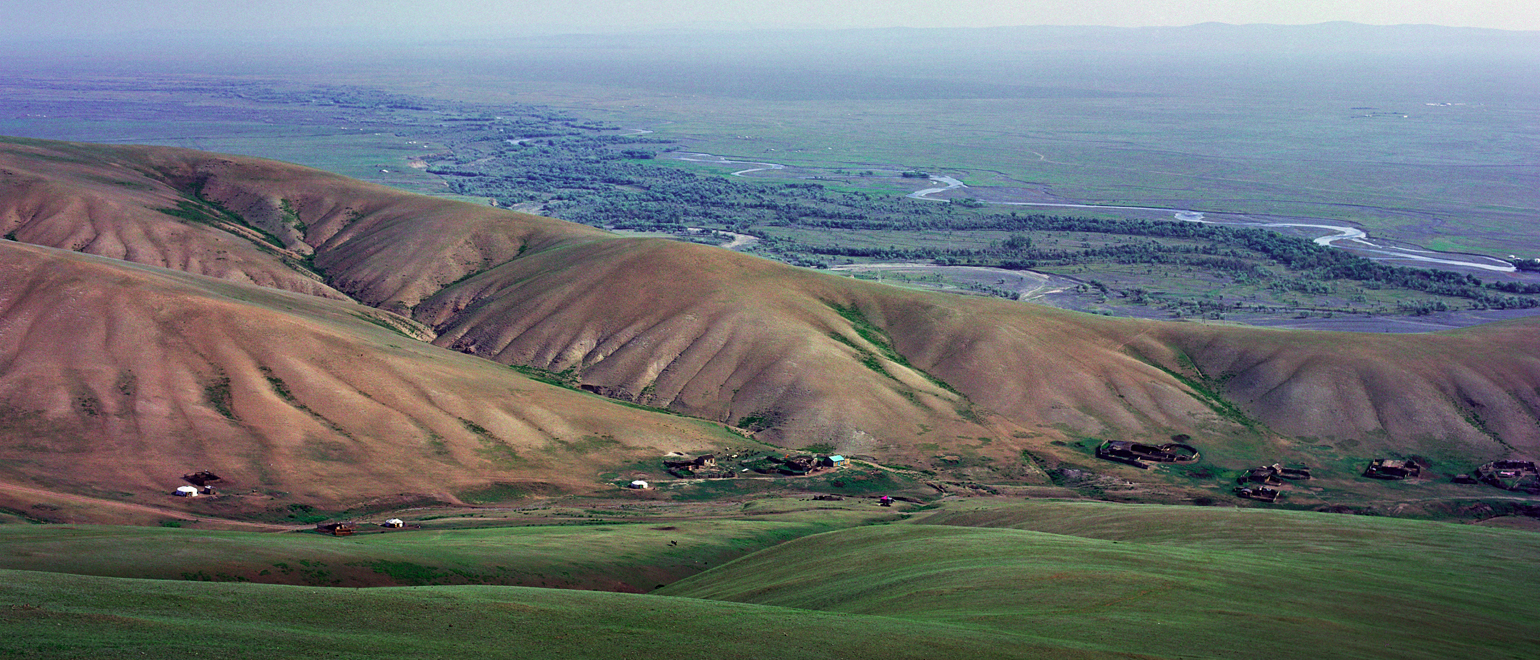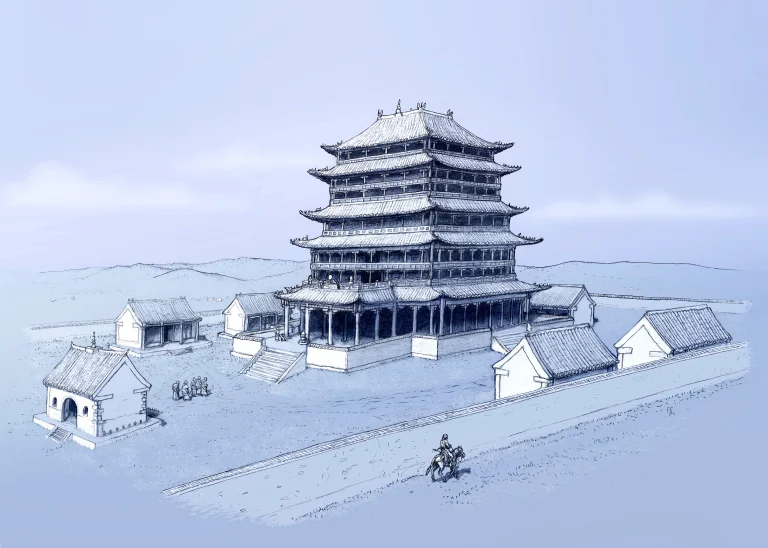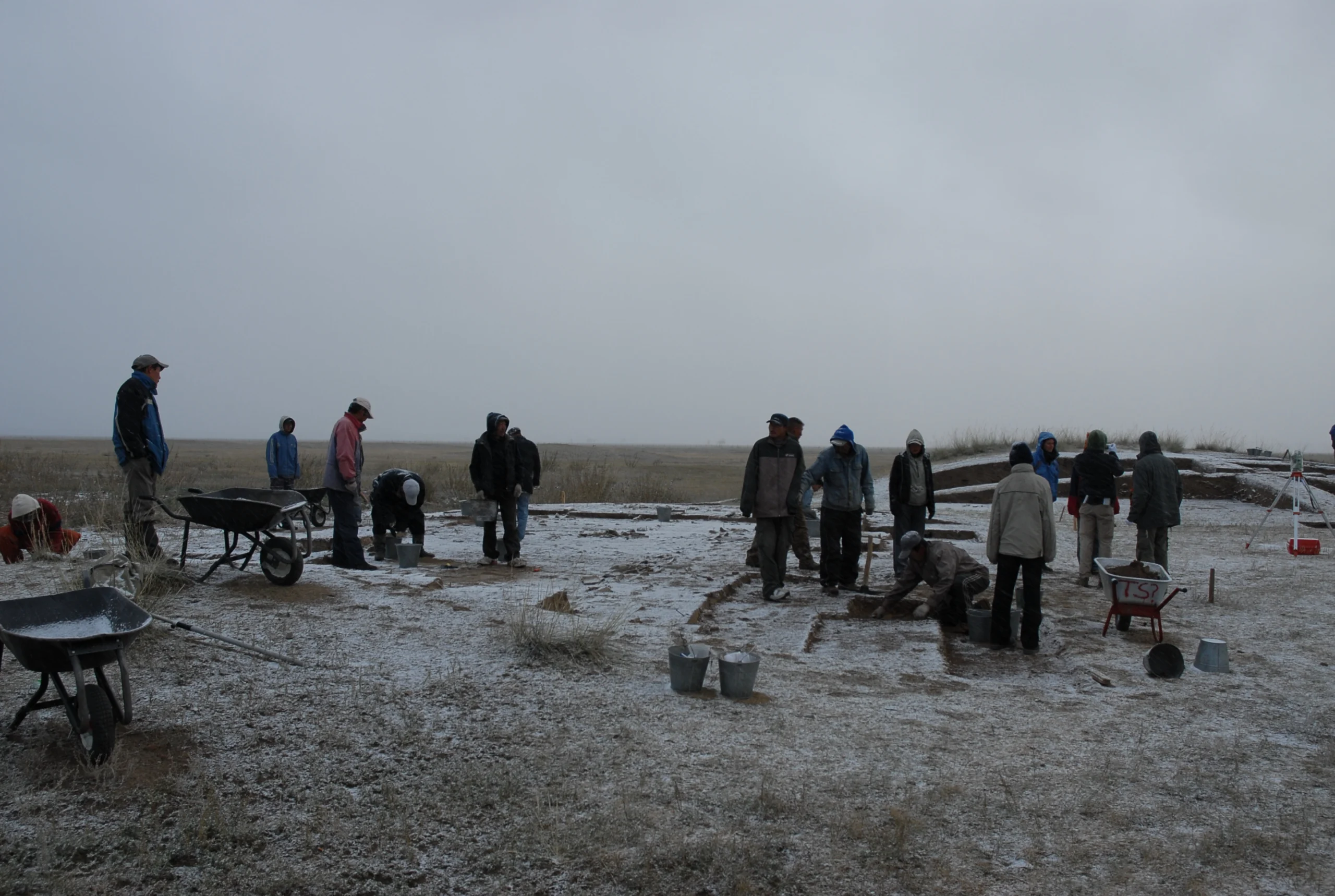
Wilhelm von Rubruk and Karakorum
One of the most important and interesting written sources on the medieval Mongolian capital of Karakorum comes from Latin Europe, of all places. It is the travelogue of the Flemish Franciscan monk Wilhelm von Rubruk. Who was this traveller and what brought him to Karakorum?
European Missions to the Mongols
For a long time, there was no direct contact between Europe, Mongolia and East Asia. However, this changed after the so-called “Mongol Invasion”, during the military operations of Mongolian armies in Eastern and Southeastern Europe in the years 1237–1241. The shock of the Invasion was followed by curiosity and interest in Mongol culture. European rulers sent a series of missions to gather military and diplomatic information and, if possible, to convert the Mongol rulers to Christianity. The missions were commissioned by, among others, the Emperor of Byzantium, the Pope and the King of France. These journeys marked the beginning of the opening up of new horizons in Asia for Europeans. Until then, the Europeans’ knowledge of Asia had been uncertain and legendary. It was based almost exclusively on ancient texts. The travellers of the 13th and 14th centuries were the first to provide reports from their own experience. Their writings contain information about the customs, religion and everyday culture, but also geographical information about the regions and peoples of Central Asia, Mongolia and China.
Setting out from Western Europe, envoys sent by the Pope were the first to reach the Mongols. In March 1245, Innocent IV sent two legations with letters to the Mongolian rulers in southern Russia and Persia. Their aim was to dissuade the Mongols from their aggressive policy and, in particular, to direct their military power in the Middle East against the Muslims in the Holy Land. The work of Johannes von Plano Carpini reports on one of these legations. The then already elderly Franciscan friar had traveled to the court of the Great Khan Güyük in Mongolia. However, the answer he received from the Mongolian ruler to the Pope’s letter was not satisfactory. The letter from the Mongolian ruler contained a demand for the Pope and all the rulers of the Western nations to submit to Mongolian sovereignty. However, the diplomatic failure of John’s embassy was offset by a wealth of information that he had recorded during his long journey (1245-1247). He processed it into an extensive treatise on Mongolian geography, culture, religion, mentality, politics, diplomacy and military, the “Ystoria Mongalorum”, to which he added his travel notes.
The “Itinerarium” of Wilhelm von Rubruk
The most detailed Western account of the Mongols of the 13th century and their capital Karakorum is also due to a Franciscan monk: the Fleming Wilhelm von Rubruk. His report, entitled “Itinerarium”, is a very personal and detailed travelogue. More than his predecessors, he strove to understand the mentality of the Mongols. His account provides vivid insights into the lives of ordinary and high-ranking Mongols and into their religious beliefs. The reason for his journey was the rumor that Sartach, a prince of the Golden Horde and son of Batu Khan, had converted to Christianity. At that time, the “Golden Horde” formed the westernmost part of the Mongol Empire. Rubruk wanted to stay at Sartach’s court and convert the Mongols there to Christianity. Rubruk was not an envoy, but saw himself primarily as a missionary and pastor. Nevertheless, he carried a letter of recommendation from the French king. It was addressed to the Mongolian prince Sartach, whose court was the monk’s goal. Furthermore, we have the king’s order to Rubruk to write down everything he had seen and experienced to thank for the existence of his report.

Travels through Central Asia
Rubruk’s report begins with the fact that he set out in May 1253, accompanied by his fellow friar Bartholomew of Cremona, two other companions and an interpreter, to cross the Black Sea. The journey first took them to the Crimean peninsula. From there, he went around the Sea of Azov by land. He then crossed the Don and reached the camp of Sartach. Rubruk’s original plan however, to convert the pagans at Sartach’s court, would not work out. Sartach did not consider himself authorized to decide on the request put forward in the letter from the French king that the monks should stay with him. He therefore sent the missionaries on to the court of his father Batu Khan. He also did not want to make a decision about the monks’ desire to proselytize among the Mongols, so they were sent on again – to the Great Khan Möngke in Karakorum. They set out on September 15, 1253 and crossed Central Asia on horseback. Rubruk’s account vividly describes the hardships of the journey. He tells of days’ rides of over 60 miles, of exhausted horses, hunger, thirst and cold. At the same time, he paints a vivid picture of the colorful mix of peoples and religions in Central Asia during the Mongol era. On his way, he visited Muslim-influenced towns and heard about German miners and craftsmen in the Tian Shan Mountains. At the same time, he witnessed the destruction caused by the Mongol campaigns. He mentioned a multitude of destroyed cities in Semirechye, south of Lake Balkhash. In the city of Qayaligh, situated at the northern foothills of the Alatau Mountains, he first came into contact with followers and clergy of the Buddhist religion, who he always referred to as “idolaters”. He also describes the structure of a Buddhist temple at this point. The main idol was always placed on the north side. His first reference to the city of Karakorum is interesting: he saw an idol there that was as large as a painted portrait of St. Christopher. The idol described must therefore have been huge. This message possibly refers to the larger-than-life Buddha figures, the remains of which were found during the excavation of the “Great Hall” in Karakorum.

At the Court of Möngke Khan
Just three and a half months later, on December 27, the monks reached the Mongke Khan court. Here he met an Armenian monk and numerous Nestorian Christians. Some of them held important positions in the court, one was even the chancellor of the ruler. Among the Mongol camp were also Europeans from the Latin Christianity, including Hungarians and French, as well as travelers from the Middle East and the Crusader states. Rubruk and his companion were received by Möngke for an audience and then integrated themselves into the religious life of the court. They mostly accompanied the Armenian monk and some Nestorian priests to cultic rites in the yurts of Möngke Khan and his partly Christian wives and offspring. However, Rubruk was disappointed by the Mongolian Christians. In his opinion, they had not been properly baptized and instructed; moreover, they were addicted to fortune-telling and idolatry. He also quickly realized that Möngke Khan himself did not favor any of the religions. He showed respect for all religious communities and supported their dignitaries at his court. In return, they had to pray for his salvation.


Rubruk in Karakorum
After some time, the court, with Rubruk in its retinue, reached the city of Karakorum. The following is the most detailed contemporary description of the city. It begins with the ruler’s court. There was a large residence here, along with many other buildings. They were “as big as barns” and were used to store his supplies and treasures. The whole complex was surrounded by a brick wall. In the entrance area of the residence stood a tree made of silver. It was decorated with silver lions and golden snakes and dispensed five different drinks. It had been made by the Parisian silversmith Wilhelm Bouchier, who had ended up in Karakorum as a prisoner of war.
To describe the palace, Rubruk used the example of a church that he was familiar with. It had three naves and three portals on the south side. The ruler’s throne was on the opposite side, on the north side, on a raised platform that was accessed by two staircases. The men of the court were on the west side, and the women were on the east side, with the ruler’s family also seated on a raised platform. The palace thus had the same spatial arrangement as a Mongolian yurt: the head of the household sat facing the door, which always pointed south. The place of honor for esteemed visitors was to his right. Male family members and other visitors also sat along the right side of the dwelling, depending on their rank. Women and children are on the opposite side to the left of the head of the household. This order is still observed in rural Mongolia today.
According to Rubruck, the city itself was not on par with the suburb of the monastery of St. Denis. It contained two streets or districts (vici). Muslims mainly lived on one street. The city’s markets were here. They were a meeting point for many traders. The Chinese lived on the other street; they were all said to be artisans. Apart from these two streets, there were large buildings that served as the court chancelleries, twelve “idol temples” of different nations – Rubruk probably means Buddhist temples – two mosques and a Christian church. The city was surrounded by a mud wall and had four gates where markets were held: grain was sold at the eastern gate, sheep and goats at the western gate, cattle and wagons at the southern gate, and horses at the northern gate.
Rubruk was given a tent near the church. He participated in the religious life of the Christians in Karakorum, although he was often concerned about the – in his eyes flawed – liturgy of the Nestorian clergy.
The narrative highlight of his story is a religious debate between Muslims, Christians and Buddhists at the court of Möngke Khan. The ruler himself had arranged the discussion and invited the clergy present in Karakorum to participate. In this way, he wanted to find out which religion was superior. First, the participants had to submit written confessions and explanations. Rubruk and the Nestorian Christians then jointly compiled a chronicle from the creation of the world to the resurrection and the Last Judgment. They also wrote down the Christian creed and agreed on a common approach to the faith discussion.
Wilhelm von Rubruk is the only source that reports on the course of the discussion. On top of that, he was hindered by cultural and language barriers. He himself, of course, saw the Christians as right and also emphasized his own part in the sovereign appearance of the Christian party. Nevertheless, he concludes that – despite all his argumentative superiority – none of those present converted to Christianity. Instead, the dispute ended in a general drinking session.
The next day, Möngke Khan summoned the Franciscan friar to his presence for a final time. On this occasion, Rubruk’s Buddhist discussion partner from the previous day was also present. The ruler now explained his religious beliefs to both clergymen: in the eyes of the Mongols, there is only one universal God. However, this God has given people different paths to salvation. After this confession, Möngke informed the missionary that he had to return home. Rubruk agreed to take a letter from Möngke to King Louis of France. The letter again contained a demand to submit to the Khan’s divinely ordained supremacy.
Return Journey West
In July 1254, Rubruk began the return journey. It took him on a more northerly route through Central Asia to the Volga region, where he again sought out Sartach and Batu Khan. He then traveled south along the Volga, crossing the Caucasus and Anatolia, and finally crossing over to Cyprus. Rubruk reached Nicosia on June 16, 1255 and was ordered by his order to travel directly to Antioch. He took part in a meeting of the order’s chapter in Tripoli and was finally sent to Acre for teaching duties.
On his journey home, he also observed numerous details carefully. He reported on the religious conditions, the sparse armor and weapons, and at the same time the high frugality of Mongolian troops, as well as geographical and historical peculiarities.
The entire text is addressed to the report’s recipient: King Louis IX of France. He had ordered Rubruk to report everything he saw in writing. After his return, the monk asked the king for permission to visit him in France. This request seems to have been successful. A final reference to Rubruk can be found in the works of Roger Bacon, who met him in France and asked him about his report. This encounter probably took place around 1257. After that, the sources on Rubruk’s person dry up.
The travelogue of Wilhelm von Rubruk is still worth reading today and is an important source on medieval Mongolia. It not only contains the only detailed description of Karakorum, but also provides many insights into the religion, customs and traditions of the Mongols. Although much of what he observed or was translated is wrong or misunderstood, the special significance lies in the fact that he wrote down his observations at all. For the Mongols and their neighbouring peoples, these things were everyday occurrences and not worth writing down. It is only thanks to the curiosity of the well-traveled missionary that many of the details have been preserved for posterity.
